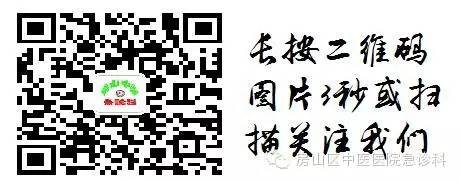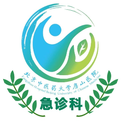3. Deficiency and Excess
Deficiency and excess are the two principles for distinguishing the strength of the body’s righteous qi and the severity of pathogenic factors. Generally speaking, deficiency refers to insufficient righteous qi, and deficiency syndrome manifests as symptoms resulting from this insufficiency, while excess refers to the overabundance of pathogenic qi, and excess syndrome manifests as symptoms resulting from this overabundance. The Suwen: On the Discussion of Deficiency and Excess states: “When pathogenic qi is strong, it is excess; when essence and qi are depleted, it is deficiency.” From the perspective of the comparative strength of righteousness and pathogenicity, deficiency syndrome indicates insufficient righteous qi, but the pathogenic qi is not strong; excess syndrome indicates strong pathogenic qi, but the righteous qi has not yet declined, reflecting a fierce struggle between righteousness and pathogenicity. Differentiating between deficiency and excess is the basis for treatment, determining whether to support righteousness (tonify deficiency) or attack pathogens (drain excess), hence the saying, “tonify the deficient, drain the excess.”
(1) Deficiency Syndrome
The formation of deficiency syndrome may be due to a weak constitution (congenital or acquired insufficiency), prolonged illness damaging righteous qi, loss of blood, loss of essence, excessive sweating, or invasion by external pathogens damaging righteous qi, leading to “depletion of essence and qi results in deficiency.”
Main symptoms: pale or sallow complexion, lack of spirit, fatigue, palpitations, shortness of breath, cold limbs, or five hearts heat, spontaneous sweating, night sweats, loose stools, frequent urination or incontinence, pale tongue with little or no coating, weak and forceless pulse, etc.
Clinically, deficiency can be categorized into qi deficiency, blood deficiency, yin deficiency, and yang deficiency due to insufficiencies in qi, blood, yin, and yang, as well as various organ deficiencies (such as lung qi deficiency, heart blood deficiency, liver yin deficiency, spleen qi deficiency, kidney yang deficiency, etc.). Below are the symptoms and treatment principles for qi deficiency, blood deficiency, yin deficiency, and yang deficiency. The organ deficiencies will be discussed in the context of organ differentiation.
The common symptoms of qi deficiency and yang deficiency are: pale or sallow complexion, lack of spirit, fatigue, low voice, spontaneous sweating, reduced appetite, pale and swollen tongue, weak pulse. The difference is that qi deficiency presents with shortness of breath, fatigue, and rapid breathing upon exertion, with a weak pulse. The treatment principle is to tonify qi, commonly using Si Jun Zi Tang (Four Gentlemen Decoction), etc. Yang deficiency presents with aversion to cold, cold limbs, clear and frequent urination, diarrhea with clear stools, and a slow pulse. The treatment principle is to tonify yang, commonly using Shen Qi Wan (Kidney Qi Pill), Ren Shen Rong Wan (Ginseng and Deer Antler Pill), etc.
The common symptoms of blood deficiency and yin deficiency are: emaciation, dizziness, vertigo, insomnia, palpitations, and thin pulse. The difference is that blood deficiency presents with a pale and dull complexion or sallow skin, numbness in hands and feet, pale lips and nails, pale tongue, and weak and thin pulse. The treatment principle is to nourish blood, commonly using Si Wu Tang (Four Substance Decoction), etc. Yin deficiency presents with low-grade fever or tidal fever, flushed cheeks, five hearts heat, dry mouth, dry throat, night sweats, red tongue with cracks or little coating, and thin and rapid pulse. The treatment principle is to nourish yin, commonly using Liang Wei Di Huang Wan (Six-Flavor Rehmannia Pill), etc.
From the above, it can be seen that qi deficiency and yang deficiency belong to insufficient yang qi, hence the clinical manifestations are similar, both presenting with pale complexion, fatigue, and spontaneous sweating. However, they also have distinctions: qi deficiency is deficiency without “cold signs,” while yang deficiency is deficiency with “cold signs”—aversion to cold, cold limbs, and slow pulse, etc. Blood deficiency and yin deficiency belong to insufficient yin fluids, hence the clinical manifestations are similar, both presenting with emaciation, dizziness, palpitations, and insomnia. However, they also have distinctions: blood deficiency is deficiency without “heat signs,” while yin deficiency is the loss of yin fluids that cannot restrain yang qi, leading to yang excess, hence presenting with “heat signs”—low-grade fever or tidal fever, dry mouth, dry throat, etc.
(2) Excess Syndrome
The formation of excess syndrome may be due to a strong constitution of the patient, where external pathogens invade and cause acute illness, or due to dysfunction of the organs leading to the accumulation of certain pathological products in the body, such as qi stagnation, blood stasis, phlegm-damp accumulation, parasitic accumulation, or food stagnation.
Clinical manifestations vary depending on the nature of the pathogenic factors and the organs they invade, characterized by strong pathogenic qi and weakened righteous qi, with a fierce struggle between righteousness and pathogenicity. Common symptoms include high fever, flushed face, agitation, delirium, loud voice, abdominal distension and pain with tenderness, excessive phlegm, constipation, difficult urination, or the presence of blood stasis, edema, food stagnation, parasitic accumulation, thick and greasy tongue coating, and a strong and forceful pulse.
The treatment principle is to drain excess and attack pathogens, known as “drain the excess when it is present.” However, different methods of draining fire, promoting bowel movements, expelling water, resolving phlegm, regulating qi, invigorating blood, resolving stasis, digesting food, and expelling parasites will be discussed in relation to various excess syndromes caused by different pathogenic factors in relevant chapters.
Distinguishing between deficiency and excess can be considered from the following aspects: from the onset time, new or acute illnesses are often excess syndromes, while chronic or long-standing illnesses are often deficiency syndromes; from the etiology, external pathogens often lead to excess syndromes, while internal injuries often lead to deficiency syndromes; from constitution, younger and stronger individuals often present with excess syndromes, while older and weaker individuals often present with deficiency syndromes; from clinical symptoms and signs, refer to the following differentiation:
Deficiency Syndrome: pale, sallow, or dull complexion, lack of spirit, fatigue, low voice, tenderness upon palpation, pale tongue with white or little coating, weak and forceless pulse. Treatment principle: tonify deficiency.
Excess Syndrome: flushed face, agitation, delirium, loud voice, severe pain with tenderness, red tongue with thick yellow greasy coating, strong and forceful pulse. Treatment principle: drain excess.


